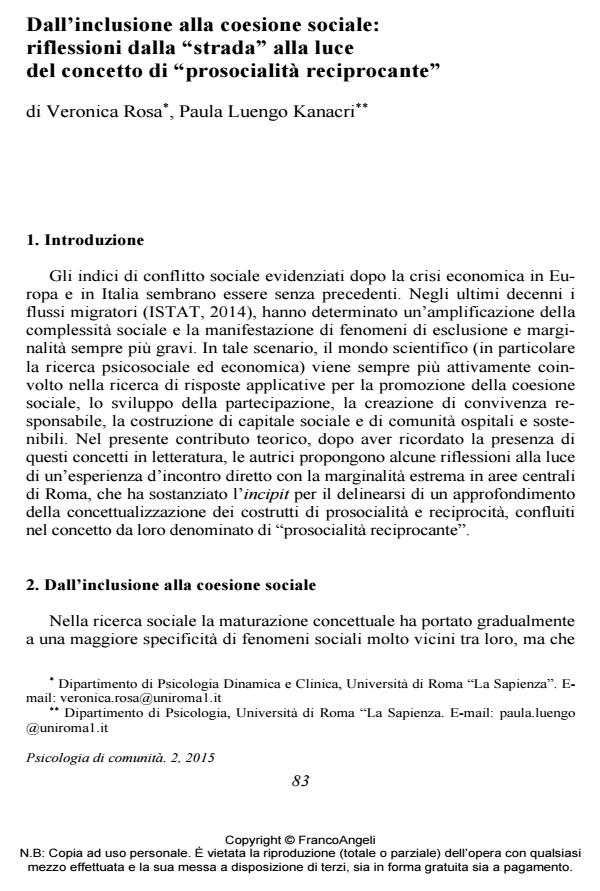From inclusion to social cohesion: reflections from the "street" to light of "reciprocating prosociality" concept
Journal title PSICOLOGIA DI COMUNITA’
Author/s Veronica Rosa, Paula Luengo Kanacri
Publishing Year 2015 Issue 2015/2
Language Italian Pages 10 P. 83-92 File size 41 KB
DOI 10.3280/PSC2015-002007
DOI is like a bar code for intellectual property: to have more infomation
click here
Below, you can see the article first page
If you want to buy this article in PDF format, you can do it, following the instructions to buy download credits

FrancoAngeli is member of Publishers International Linking Association, Inc (PILA), a not-for-profit association which run the CrossRef service enabling links to and from online scholarly content.
The contribution was born from the desire of the authors to emphasize the role of a "reciprocating prosociality" in predicting inclusiveness and social cohesion. The "reciprocating prosociality" means to put in action bidirectional and circular behaviors, by ensuring the conditions in which who receives a benefit is also able to "reciprocate". This is what has been experienced by the authors in an ongoing project carried out in collaboration with other volunteers working with extremely marginalized homeless people in Rome. The authors are engaged in "bringing research questions on these issues on the street , in order to begin to grasp answers from the people’s narratives and build relationships that can generate a responsible and cohesive "living-together".
Keywords: Social inclusion, social cohesion, reciprocating prosociality, extreme marginality, responsible living together, social support networks.
Veronica Rosa, Paula Luengo Kanacri, Dall’inclusione alla coesione sociale: riflessioni dalla "strada" alla luce del concetto di "prosocialità reciprocante" in "PSICOLOGIA DI COMUNITA’" 2/2015, pp 83-92, DOI: 10.3280/PSC2015-002007